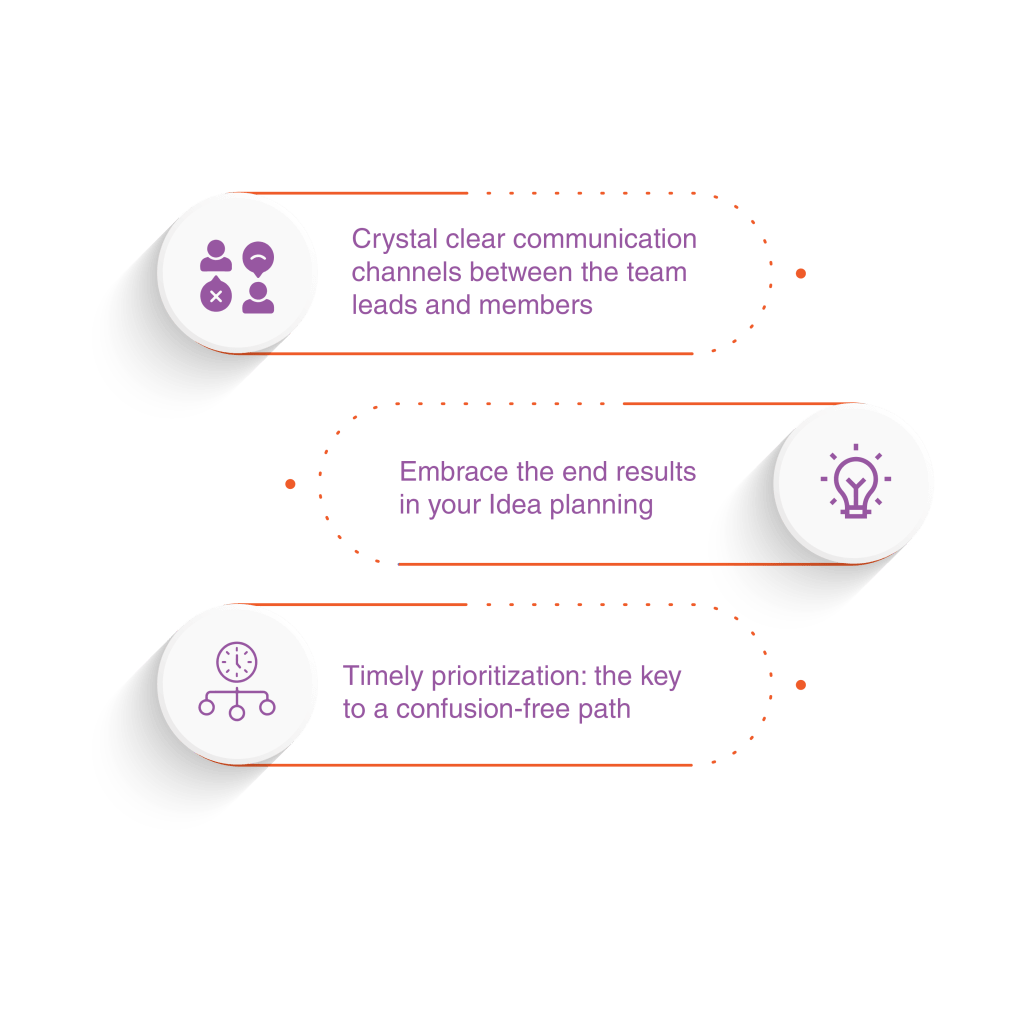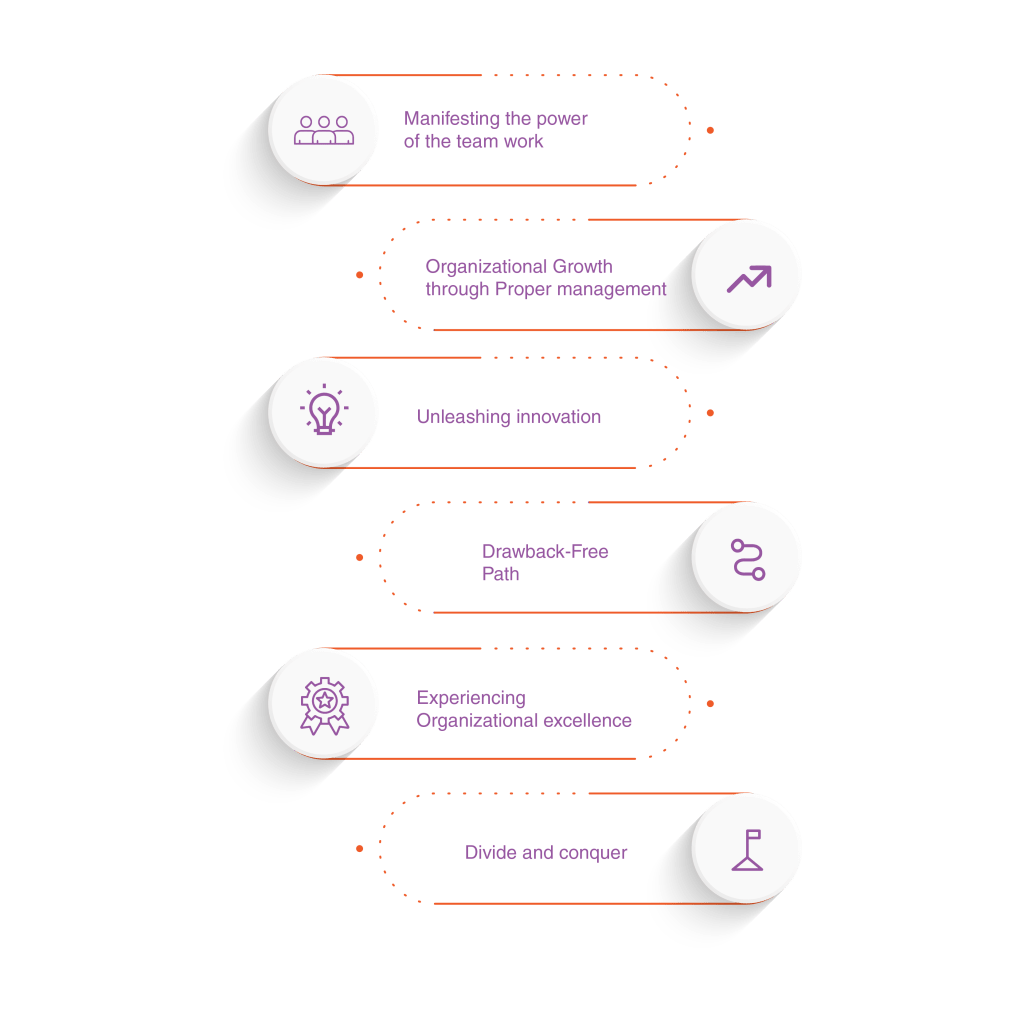THE ROLE OF VISION AND STRATEGY IN LEADERSHIP
At the core of a thriving business lies the indispensable quality of leadership. Leading a
team demands a multi-faceted approach that incorporates a blend of strategy and an
insightful vision that remains attuned to the evolving demands and interests of both
customers and stakeholders
How can leaders ensure that their stakeholder engagement goes beyond merely
collecting feedback and transforms it into a truly collaborative and impactful process?
Engaging stakeholders offers valuable insights and perspectives that can update
decision-making and strategic planning. By actively listening to their feedback, leaders
can gain a deeper understanding of the market, identify emerging trends, and adapt their
strategies to meet evolving customer demands. Ultimately, a stakeholder-centric
approach allows leaders to navigate complexities with confidence and chart a course for
sustainable success.
Successfully guiding a team requires a multi-layered approach that integrates creatively
planned strategies, an insightful vision, and active stakeholder engagement. To ensure
consistency in the role of a clear vision in leadership, it is best to prioritize three key
techniques that are essential to business success;
THE POWER OF EFFECTIVE COMMUNICATION TO SHARE YOUR VISION WITH YOUR TEAM
To effectively communicate the new innovative ideas and techniques among your
company’s workers and partners it is necessary to significantly transfer your vision
to them.
UNLOCKING SUCCESS THROUGH STRATEGIC THINKING
Before starting to work on a new ideology, it is very important to approach a realistic future
situation leading to end results. The planning of strategies should be focused on the clear
and straightforward vision of all the dependent factors considered relevant to any
project/task while determining the ideas.
Make your vision pure and strong to avoid any disturbances of irrelevant ideas which will
complex the situation even further. A clear vision will help you to generate a compatible
strategy.
PRIORITY SETTING THROUGH STRATEGIC ALIGNMENT
You will surely start panicking if you have a bundle of tasks aligned in an unorganized way.
Your tasks should be organized according to the importance and need of the
organizational strategic priorities.
The primary objectives of any project should be taken care of at the start of the project,
which will help to conduct the overall tasks effectively providing a clear vision. In this way,
the group leaders would have a chance to easily assemble the timeline of the important
tasks and pending reports which will help them to avoid any delays and mishaps later.

Figure 1: Improtant points to be noted to have a
clear vision in leadership
CONSTRUCTIVE WAYS TO PLAN STRATEGIES FOR A PROSPEROUS BUSINESS
How can leaders strike the perfect balance between innovation and efficiency to ensure
project success in an ever-evolving business landscape?
By strategically planning and implementing effective methodologies, leaders can enhance
project outcomes, streamline processes, and achieve the desired results most efficiently
and effectively.
IGNITING THE POWER OF TEAMWORK FOR EFFECTIVE RESULTS
In the midst of challenges or issues, motivating team members is critical to achieving positive
end results and optimizing team performance. By doing so, team members will feel a greater
sense of value, try to uplift their engagement, and execute their tasks with increased efficiency.
UNLEASHING INNOVATION THROUGH CREATIVE THINKING
One approach to fostering a creative and innovative working environment is to regularly
generate fresh ideas through brainstorming sessions and by exploring relevant keywords
associated with current topics.
By encouraging your team members to participate in brainstorming sessions, you create
a space for them to contribute their unique perspectives and insights. This not only
stimulates creativity but also boosts their sense of ownership and commitment to their
Additionally, by incorporating diverse viewpoints and ideas, you can uncover new and
innovative solutions to challenges and drive the growth and success of your business in
the long run.
Embracing a culture of creative thinking and valuing the input of your team members can
lead to continuous improvement, enhanced productivity, and a competitive edge in the
marketplace.
EXPERIENCING ORGANIZATIONAL EXCELLENCE BY MASTERING EXPERT MANAGEMENT TECHNIQUES
Effective project management is critical for promoting worker engagement and avoiding
conflicts of interest when managing multiple projects within an organization.
By timely managing planned tasks and projects, leaders can optimize resource allocation,
streamline communication channels, and foster a sense of clarity and purpose among
team members, where individuals work together towards a common goal.
It is essential to establish a proper structural plan with an organized timeline to execute
multiple tasks seamlessly while avoiding unnecessary distractions that can impede the
completion of individual projects within their designated timeframes.
Effective project management plays a significant role in creating a healthy and productive
work environment. It facilitates efficient task completion by providing a structured
framework, setting realistic timelines, and allocating resources effectively. This not only
enhances productivity but also reduces the likelihood of conflicts and misunderstandings.
Accelerating Problem-Solving Techniques for a Drawback-Free Path – A great leader
will always identify the root cause of the problem and try to resolve it as early as possible
to avoid any further delays and mismanagement of the tasks.
By adopting a proactive approach to problem-solving, you can tackle challenges head-on
and swiftly navigate through potential obstacles. This approach empowers you to identify
issues early on, analyze them critically, and develop effective solutions in a timely
This mindset enables you to make informed decisions, leveraging data, insights, and
creative thinking to generate innovative solutions. Ultimately, this results in improved
business performance, enhanced customer satisfaction, and a more resilient and agile
organization ready to thrive in a dynamic business landscape.
NURTURING ORGANIZATIONAL GROWTH WITH PROPER ASSESSMENTS
How can leaders leverage a comprehensive understanding of their organization’s
hierarchy to anticipate challenges, capitalize on opportunities, and foster a culture of
continuous improvement?
Effective leadership involves continuously analyzing and understanding the hierarchy of
your organization to proactively address challenges and drive success. By staying
updated on the various levels and departments within your organization, you can gain
valuable insights into potential obstacles and opportunities that lie ahead. This knowledge
allows you to develop informed strategies, allocate resources effectively, and make
informed decisions that align with your business objectives.
By actively monitoring the challenges your organization may face, you can implement
timely interventions, foster a culture of innovation and resilience, and position your
business for long-term growth and sustainability.
Through strategic analysis of your organization’s hierarchy, you empower yourself to
navigate complexities, drive positive change, and steer your organization toward
continued success in a rapidly evolving business landscape.
DIVIDE AND CONQUER: MAXIMIZING RESULTS THROUGH EFFECTIVE WORK DISTRIBUTION
The beauty of strategic planning is sharing the responsibilities to get better-filtered results in
a short period of time with a clear direction. For leaders, it is important to divide
responsibilities among team members to avoid unnecessary burdens and frustration.
Due to shared roles and responsibilities, each team member can focus on their specific
tasks, leading to improved efficiency and productivity. By clearly defining roles and
allocating responsibilities within the team, you create a streamlined workflow where
Additionally, this approach can help promote a more collaborative and supportive work
environment, leading to increased job satisfaction and better overall team performance.
It is a smarter way that provides a clear direction to each worker for achieving goals in a
short period of time

Figure 2: The benefits of strategic planning in leadership
You can address the responsibilities and challenges that come with leadership, leading
to elevated team performance, improved decision-making, and positive end results that
impact customer insights.
Seize the opportunity to embrace a clear “vision”, plan “strategically”, and lead your
team towards “success”. With a dedicated focus on these principles, you can inspire
your team, drive meaningful change, and achieve remarkable results.
